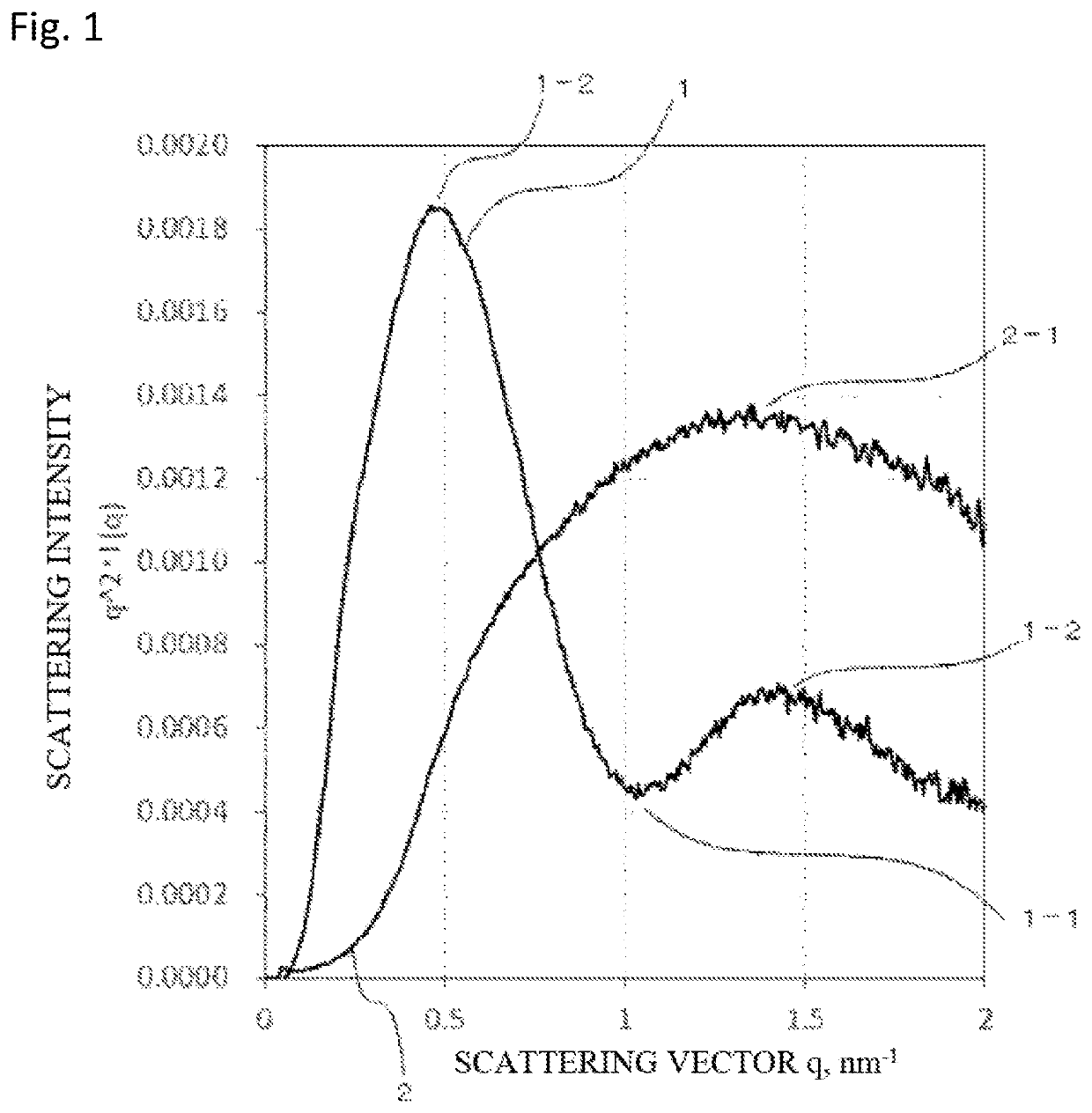Ink ejection stabilizer, ink and textile printing agent containing the same, and printed article
a technology of ink ejection stabilizer and textile printing agent, which is applied in the direction of dyeing process, inks, coatings, etc., can solve the problems of clogging of the ejection nozzle, insufficient ink ejection stability of ink containing binder resin, and inability to meet the ink ejection stability of conventional inks, etc., to achieve high ejection stability, high ejection stability, and high ejection stability
- Summary
- Abstract
- Description
- Claims
- Application Information
AI Technical Summary
Benefits of technology
Problems solved by technology
Method used
Image
Examples
example 1
[0094]In a 5-liter flask equipped with a mechanical stirrer, a thermocouple, a nitrogen inlet, two dropping funnels, and a reflux tube, 2,250 g of butyl acetate, 143.6 g of styrene, 300.2 g of NK ester AM-230G (methoxypolyethylene glycol methacrylate manufactured by Shin-Nakamura Chemical Co., Ltd.), and 6.3 g of acrylic acid were placed and heated to 95° C. After reaching 95° C., 8.0 g of benzoyl peroxide was added to initiate a reaction.
[0095]After one hour from the initiation of the reaction, monomer feed, i.e., dropwise addition of a mixture of 335.0 g of styrene, 700.4 g of NK ester AM-230G (methoxypolyethylene glycol methacrylate manufactured by Shin-Nakamura Chemical Co., Ltd.), and 14.7 g of acrylic acid into the flask was started. In the dropwise addition, the monomer feed was performed evenly over 60 minutes while maintaining the temperature inside the flask at 95° C.
[0096]After the dropwise addition was completed, the substances in the flask were refluxed for 300 minutes....
example 2
[0099]In a 5-liter flask equipped with a mechanical stirrer, a thermocouple, a nitrogen inlet, two dropping funnels, and a reflux tube, 2,250 g of butyl acetate, 143.6 g of styrene, 300.2 g of NK ester AM-90G (methoxypolyethylene glycol methacrylate manufactured by Shin-Nakamura Chemical Co., Ltd.), and 6.3 g of acrylic acid were placed and heated to 95° C. After reaching 95° C., 8.0 g of benzoyl peroxide was added to initiate a reaction.
[0100]After one hour from the initiation of the reaction, monomer feed, i.e., dropwise addition of a mixture of 335.0 g of styrene, 700.4 g of NK ester AM-90G (methoxypolyethylene glycol methacrylate manufactured by Shin-Nakamura Chemical Co., Ltd.), and 14.7 g of acrylic acid into the flask was started. In the dropwise addition, the monomer feed was performed evenly over 60 minutes while maintaining the temperature inside the flask at 95° C.
[0101]After the dropwise addition was completed, the substances in the flask were refluxed for 300 minutes.
[0...
example 3
[0104]In a 5-liter flask equipped with a mechanical stirrer, a thermocouple, a nitrogen inlet, two dropping funnels, and a reflux tube, 2,250 g of butyl acetate, 143.6 g of styrene, 300.2 g of NK ester AM-230G (methoxypolyethylene glycol methacrylate manufactured by Shin-Nakamura Chemical Co., Ltd.), and 6.3 g of acrylic acid were placed and heated to 95° C. After reaching 95° C., 15.0 g of benzoyl peroxide was added to initiate a reaction.
[0105]After one hour from the initiation of the reaction, monomer feed, i.e., dropwise addition of a mixture of 335.0 g of styrene, 700.4 g of NK ester AM-230G (methoxypolyethylene glycol methacrylate manufactured by Shin-Nakamura Chemical Co., Ltd.), and 14.7 g of acrylic acid into the flask was started. In the dropwise addition, the monomer feed was performed evenly over 60 minutes while maintaining the temperature inside the flask at 95° C.
[0106]After the dropwise addition was completed, the substances in the flask were refluxed for 300 minutes...
PUM
| Property | Measurement | Unit |
|---|---|---|
| light transmittance | aaaaa | aaaaa |
| size | aaaaa | aaaaa |
| 2θ | aaaaa | aaaaa |
Abstract
Description
Claims
Application Information
 Login to View More
Login to View More - R&D
- Intellectual Property
- Life Sciences
- Materials
- Tech Scout
- Unparalleled Data Quality
- Higher Quality Content
- 60% Fewer Hallucinations
Browse by: Latest US Patents, China's latest patents, Technical Efficacy Thesaurus, Application Domain, Technology Topic, Popular Technical Reports.
© 2025 PatSnap. All rights reserved.Legal|Privacy policy|Modern Slavery Act Transparency Statement|Sitemap|About US| Contact US: help@patsnap.com

